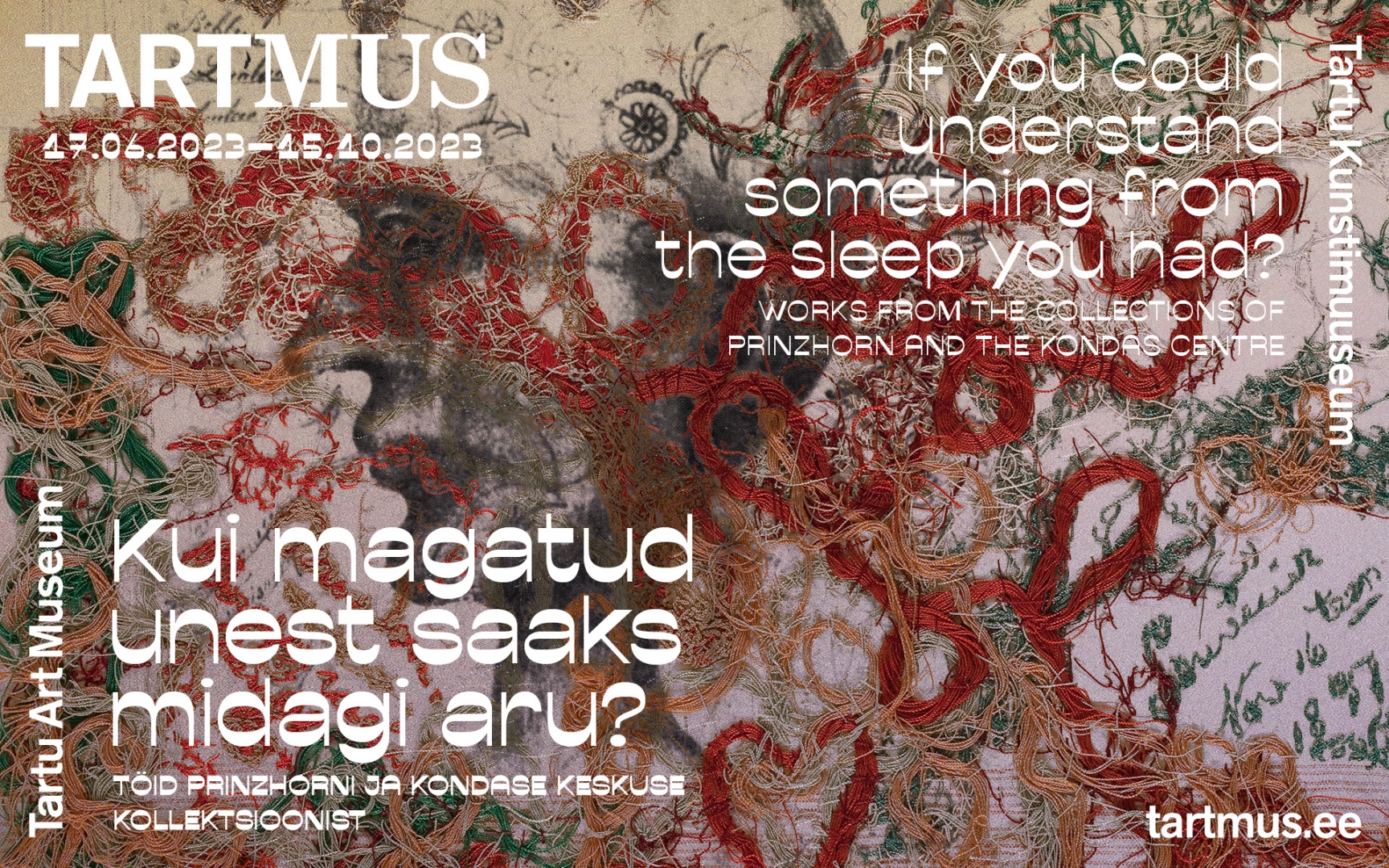The founder of scientific psychiatry, Professor Emil Kraepelin (1856–1926), also established the laboratory of experimental psychology at the University of Tartu. He worked from 1886 to 1891 at the University of Tartu and from 1891 to 1903 at Heidelberg University. In both cities he was the head of the university’s psychiatric hospital, and was one of the first to examine and preserve drawings made by patients as part of their case histories. Based on these connections, the curators have made a selection from the oldest, Kraepelin-era parts of the Prinzhorn collection. Some of the exhibited works have never been lent out by the Heidelberg museum. Displayed next to the latter is a selection of works discovered by the curators in archives in Tartu, that date to the time when Kraepelin was working at the University of Tartu.
Attitudes towards acts of self-expression by patients have been very diverse in Western psychology, sometimes even contradictory. On the one hand, they have had a positive effect on the wider art world: the theories of expressionism, which circulated at the beginning of the 20th century, led to the recognition by psychiatrists of art made in asylums, which meant that works with a more spontaneous approach were selected for preservation. Thanks to the 1922 book “Artistry of the Mentality” by the art historian and psychiatrist Hans Prinzhorn, this art found an audience in various avant-garde art circles and still influences art. On the other hand, the totalitarian societies only saw the negative elements. Some works in the Prinzhorn collection were displayed alongside expressionism at the travelling “Entartete Kunst”, an exhibition of “degenerate art” in Nazi Germany (1937–1941), where they were used to attest to the pathological qualities of avant-garde art. Such an attitude was not surprising since many psychiatrists of the older generation, including Kraepelin, considered the works of their patients manifestations of degeneration.
Whether from the psychiatric or the artistic viewpoint, art created in treatment facilities has maintained its independent position. This exhibition examines the developments, interruptions and repercussions which have taken place over a century, posing questions about institutional repulsion, the connections between the conditions of people “on the inside” and “on the outside”, about “breaking down” and being well, and the subtle line between dreams and reality, both in society as a whole and in the art world.
Curators: Mari Vallikivi and Eva Laantee Reintamm
Graphic design: Joonas Rumvolt and Kärt Einasto
Translators: Peeter Talvistu, Ann Kuslap and Carl Philip Laantee Reintamm
Coordinators: Kristlyn Liier and Indrek Grigor
Language editors: Richard Adang, Tiina Sarv
Lenders of the works: Sammlung Prinzhorn, the Kondas Centre, Tartu Ülikooli Kliinikum.
Authors: Georg Goob, Jane Grier, Johann Knopf, Joseph Alois Gottlieb Maier, Anna Marie Lieb, Michael Kolb, Anonym (Fall 240), Stefanie Richards, Baronin Zerheimb, Alois Dallmayr, Heinrich Mebes, August Natterer, Emilie Wulffius, Günther Heinrichsohn, Anonymous author, Mait Rebane, Heiki Säga and John Lake.
Special thanks: prof. Thomas Röske, prof. Jüri Allik, Ingrid Litzinger, Sarah Debatin, Torsten Kappenberg, Eva Fastenau, Indrek Linnuste, Margus Rebane, Hele Punga, Silja Tennosaar, Maarika Pällo, Lauri Pärna, Annika Vihmann, Jaan Ulst, Erni Kask, Tartu 2024.
Exhibition team: Nele Ambos, Joanna Hoffmann, Margus Joonsalu, Marko Leht, Katrin Lõoke,Viktor Kiss, Jaanika Kuznetsova, Tõru-Tõnn Parts, Kristel Sibul, Urmo Teekivi
The exhibition is supported by the Cultural Endowment of Estonia and the Estonian Ministry of Culture.
The exhibition is part of the main programme of the Tartu 2024 Capital of Culture. It is part of the project “Hidden Worlds Expanding” of the Kondas Centre.




